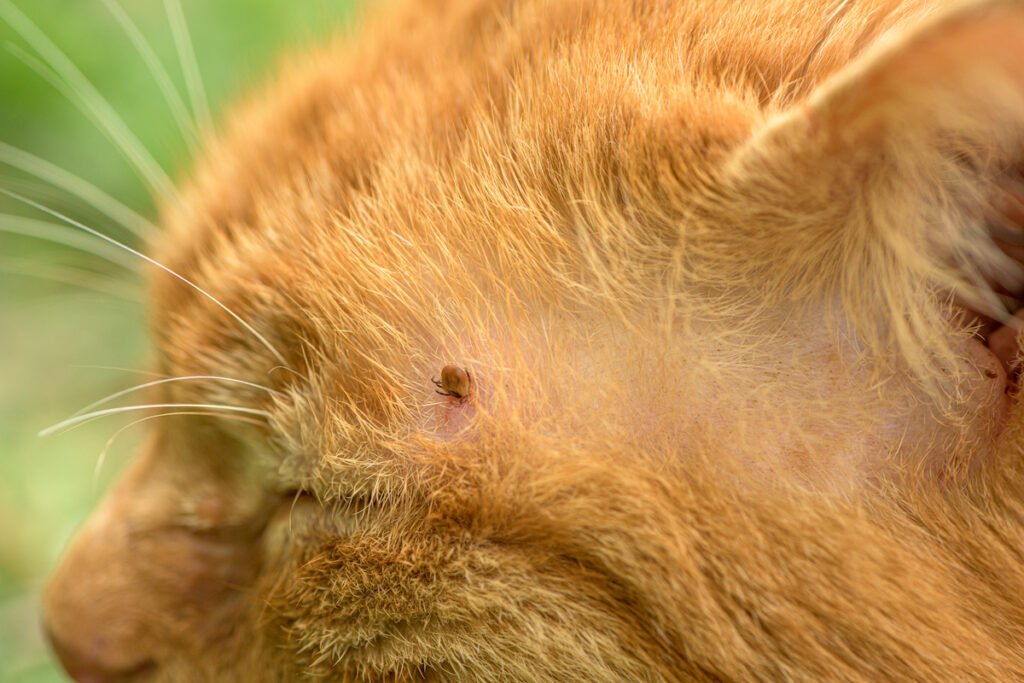
Introduction: Why Fleas in Cats Are a Serious Problem
Fleas may be tiny, but they can cause major problems for cats and their owners. These pests spread quickly, hide in carpets and furniture, and can transmit diseases like tapeworms. If you’ve noticed fleas in cats, you’ll need more than a quick fix—you’ll need a strategy that tackles both your pet and your environment.
In this guide, I’ll explain how veterinarians recommend you get rid of fleas safely and effectively while protecting your cat’s health.
Understanding the Flea Life Cycle
One of the biggest challenges with fleas is that what you see on your cat is just a small part of the problem. A single female flea can lay hundreds of eggs, which fall into your carpets, bedding, and furniture. These eggs hatch into larvae, pupae, and eventually adult fleas—meaning that for every flea on your cat, dozens more may be hiding in your home.
That’s why treating only the cat isn’t enough. To truly get rid of fleas, you need to address both the pet and the environment.
Safe Treatments for Fleas in Cats
When it comes to medication, not all flea products are safe for cats. Many over-the-counter products, especially those containing permethrins, are toxic to cats. These are often marketed for dogs and can cause serious health issues in felines.
Instead, ask your veterinarian about prescription options. Some of the most effective treatments include:
Bravecto (long-lasting topical that also treats mites)
Other prescription flea preventatives tailored to your cat’s needs
Always consult your vet before starting any flea medication to make sure it’s safe and effective for your pet.
Always consult your vet before starting any flea medication to make sure it’s safe and effective for your pet. For more information, you can also check the ASPCA’s guide on flea control for cats.
Cleaning Your Home to Eliminate Fleas
Treating your cat is only half the battle. Fleas hide in cracks, carpets, cushions, and even outdoor leaf litter. To stop the cycle, you’ll need to thoroughly clean your home.
Steps to get rid of fleas in your home:
Vacuum daily for at least a week, including under furniture and cushions
Wash all pet bedding in hot water
Clean carpets and rugs regularly
Continue vacuuming every other day for the next 2–3 weeks
Don’t be surprised if it feels worse before it gets better—when flea eggs hatch, you may see more activity, but consistent cleaning plus proper cat treatment will break the cycle.
Natural Remedies to Support Flea Control
If you prefer natural solutions, a few options can help control fleas in your environment:
Diatomaceous earth: A safe, natural powder that dries out flea larvae and pupae when sprinkled into carpets and cracks
Certain plants: Some garden plants repel fleas (such as marigolds), which may help reduce flea populations outdoors
While natural remedies can support your flea-control plan, they work best when combined with vet-approved flea treatments for your cat.
Health Risks of Fleas in Cats
Fleas don’t just make your cat itchy—they can carry parasites and diseases. The most common is tapeworms, which cats (and even humans) can get by accidentally ingesting an infected flea. This makes controlling fleas not only a matter of comfort but also of overall health.
Prevention: Stop Fleas Before They Start
The best way to manage fleas in cats is to prevent them in the first place. Start treatments before flea season, keep your cat on a reliable flea preventative year-round, and maintain regular cleaning routines at home.
Conclusion: Take Action Early
Dealing with fleas in cats can feel overwhelming, but with the right combination of veterinary treatment and environmental control, you can successfully get rid of fleas and protect your pet. Start treatment early, stay consistent with cleaning, and always choose safe, vet-approved products.
Your cat—and your home—will thank you.